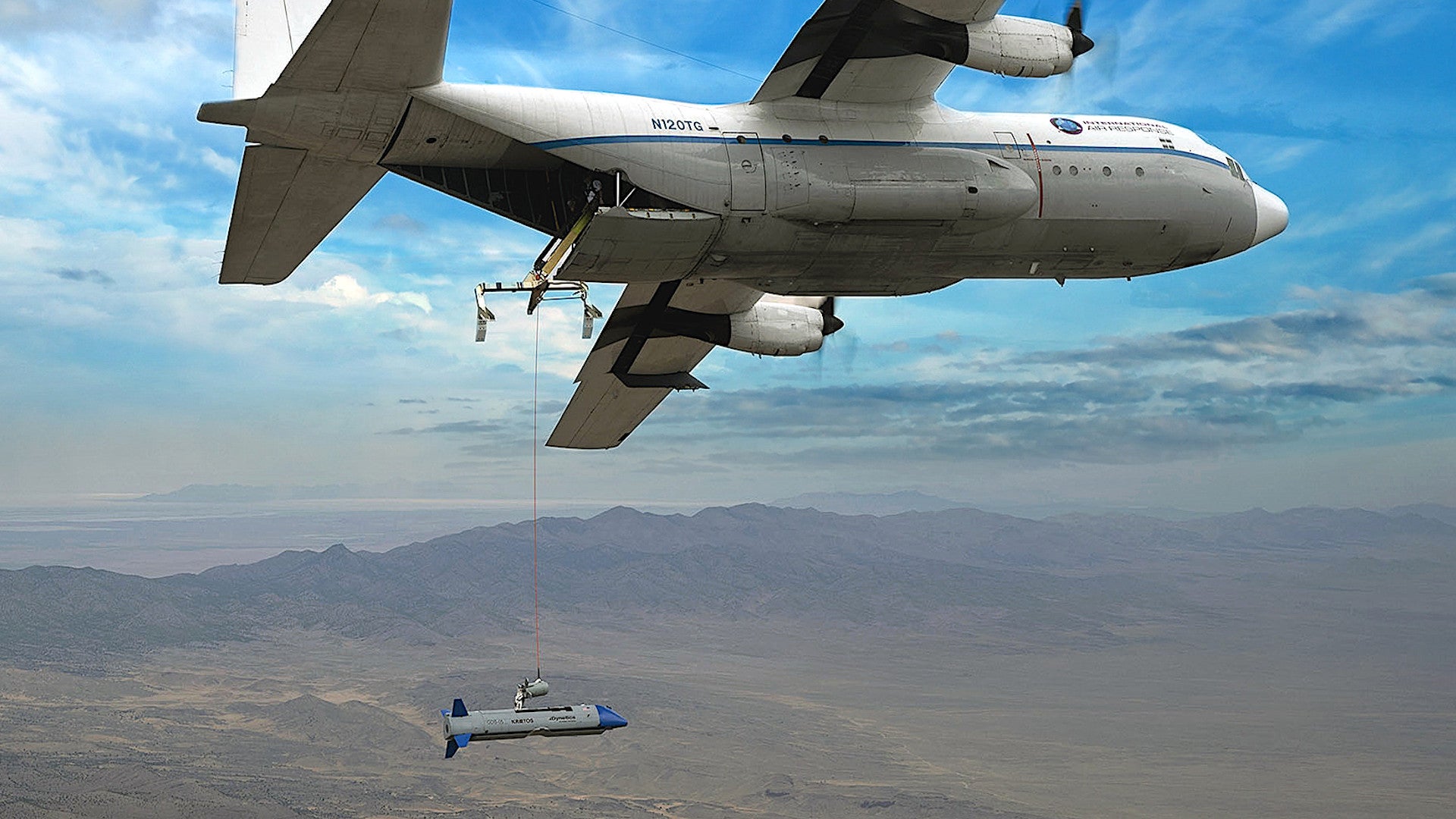The Defense Advanced Research Projects Agency, or DARPA, is exploring new potential concepts of operations as part of its Gremlins program, which has been experimenting with swarming drones that are designed to be launched and recovered in mid-air. DARPA is now looking into the possibility that personnel on a mothership aircraft that deploy and retrieve these unmanned aircraft might be able to load new payloads onto them, including swarms of smaller drones or munitions, before sending them out on new missions.
Steve Fendley, President of the Unmanned Systems Division at Kratos, offered these new details about the plans for Gremlins in a recent interview with Military.com, portions of which were published today. Dynetics, now a subsidiary of Leidos, is the prime contractor for the Gremlins program, but hired Kratos to oversee the actual design and construction of the drones themselves, which are designated X-61As. DARPA first initiated the Gremlins project in 2015.
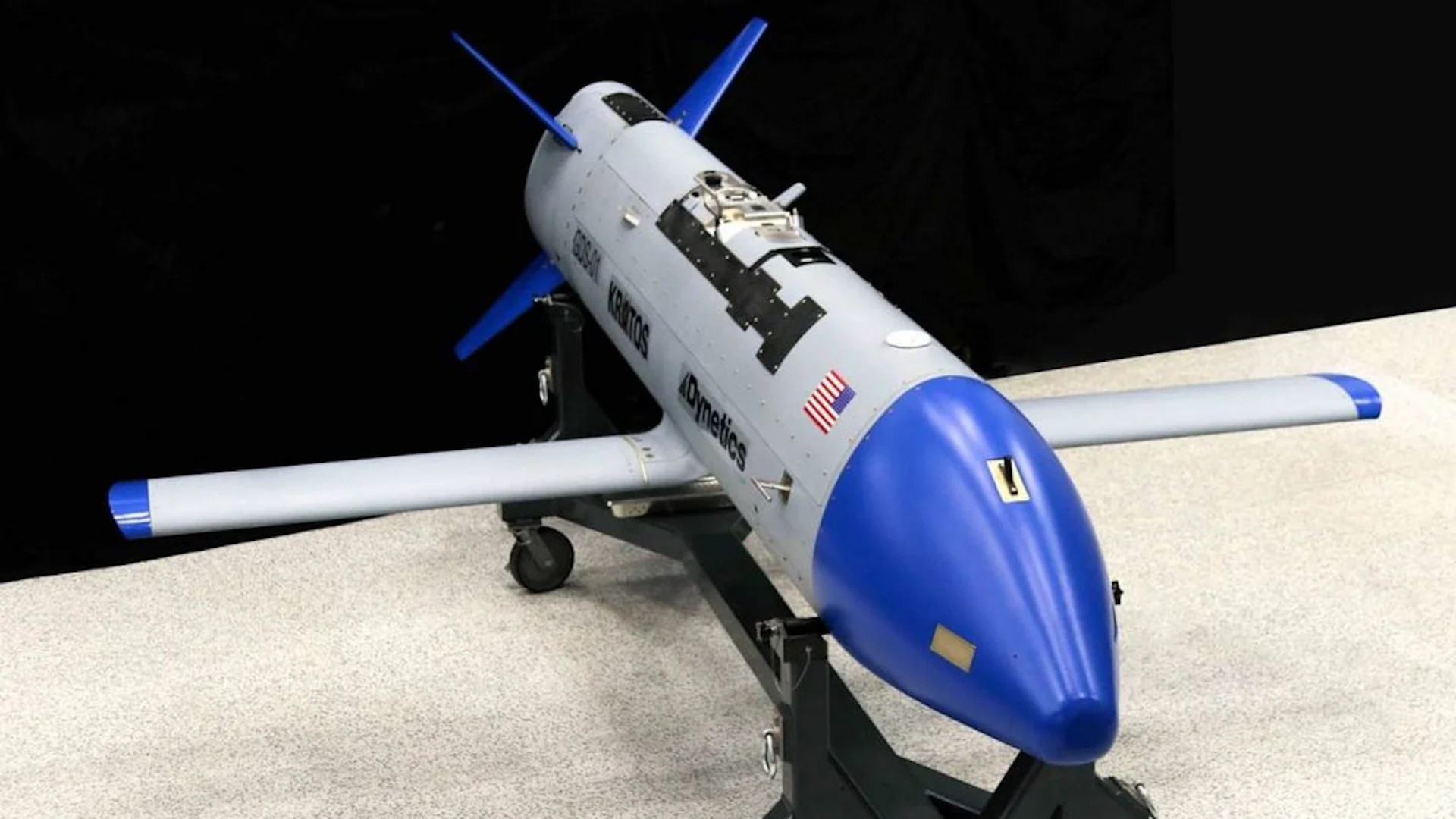
“The government is adding requirements,” Fendley told Military.com. “They now want to rearm the Gremlins in air and redeploy [them], so they won’t just do one mission now.”
Fendley did not name any specific payloads that the Gremlins might carry in the future, according to Military.com, but did say that the options could include “actual weapons.” DARPA has long talked about individual X-61As being able to carry different payloads, such as different sensor packages, electronic warfare jammers, and even potentially small warheads, and then operate together in a fully-autonomous, networked swarm to carry out missions collaboratively.

“[The military wants] to be able to deploy and retrieve a volley quantity, which is approximately 20 of those aircraft [the X-61A],” Fendley added. The X-61A is an “attritable tactical unmanned aerial system that can fly a several hour-long mission,” he continued.”
Attritable means that they are cheap enough to be employed in higher-risk environments where the risk of losing the aircraft is elevated enough that commanders would be disinclined to send in more expensive and more sensitve assets. At the same time, the Gremlins concept has always envisioned the X-61As as being recoverable for reuse, as well, but it has not been entirely clear in the past what the exact concept of operation might be in this regard.
Beyond all this, Fendley is now describing X-61As carrying expandable payloads, which could also include non-kinetic stores, such as electronic warfare decoys, and using them during a mission, before being recovered by a mothership aircraft. A specially-configured C-130-series cargo plane has been used in this role in Gremlins flight testing so far. The drones would then get reloaded inside that aircraft and be quickly sent back out again.
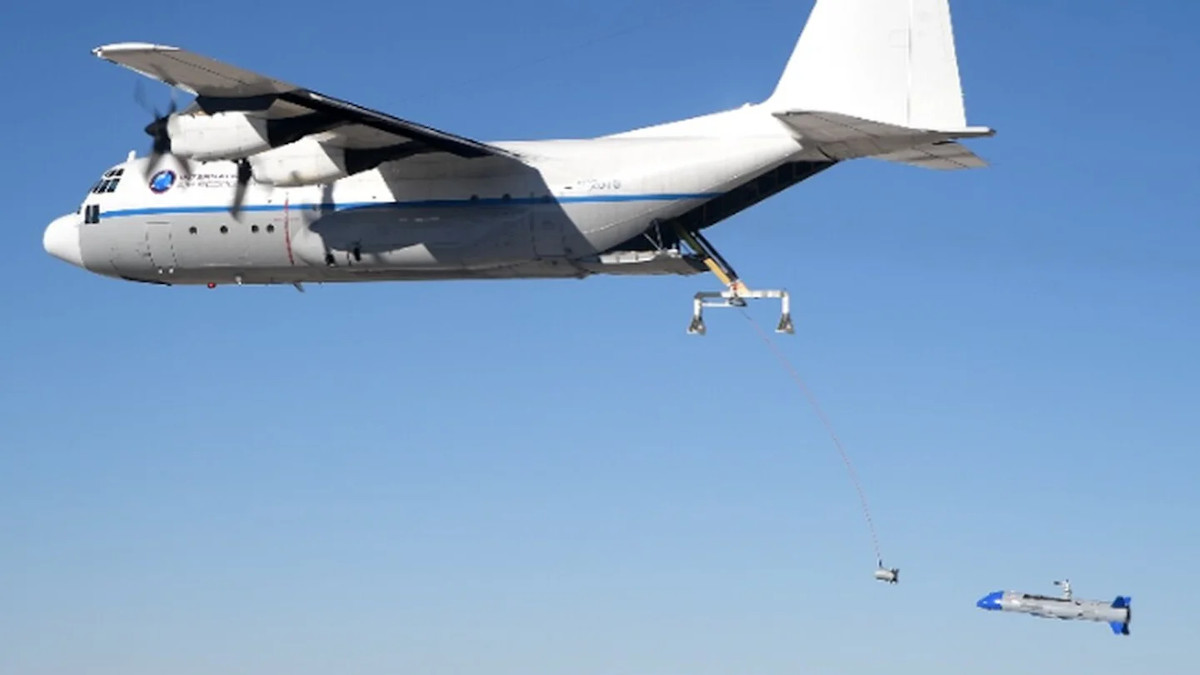
It’s not clear whether this proposed capability would also extend to swapping out modular payloads installed inside the X-61As themselves. It’s also not clear if the small turbojet-powered Gremlins would also be refueled inside their mothership, though it’s hard to see how this wouldn’t be the case in order for the entire concept to work.
Regardless, it’s not hard to see how this could further expand the flexibility of the Gremlins concept. For example, a group of these drones could be deployed initially to search for and engage targets in a certain area and then go back to their mothership to be reloaded, either simply to then fly new missions in a different portion of the battlespace or to enable them to meet rapidly changing mission requirements. The ability of X-61As to carry even smaller drones could enable them to deploy their own drone swarms in certain areas before return to their flying base to reload and do it all over again, rapidly expanding the total area one mothership could cover.
Drone swarms, in general, have an inherent ability to overwhelm and otherwise disrupt an opponent’s decision-making cycles by making it difficult for them to effectively prioritize their response. This underlying capability would be beneficial in a wide variety of contexts, especially when seeking to degrade or neutralize hostile integrated air defense networks, a mission set that DARPA has already identified as a potential future operational application for the Gremlins.
Concept art and computer renderings that DARPA, as well as Dynetics, has put out in the past have suggested the Gremlins could be initially launched from various platforms, including B-1B bombers, before returning to a mothership. A stealthy launch platform, such as a B-21 Raider stealth bomber, could conceivably penetrate deep into enemy territory before launching a swarm of X-61As, increasing the amount of time they could spend in a hostile area before heading back to less contested airspace to be recovered.
At the same time, in the past year or so, there has been a steady stream of news regarding work conducted by elements of the U.S. military, including the U.S. Air Force and the U.S. Army, as well as foreign armed forces and private companies, on air-launched and potentially air-recoverable drone concepts. This has included announcements about related developments in swarming technologies and numerous actual flight tests involving larger unmanned aircraft as launch platforms for smaller drones.
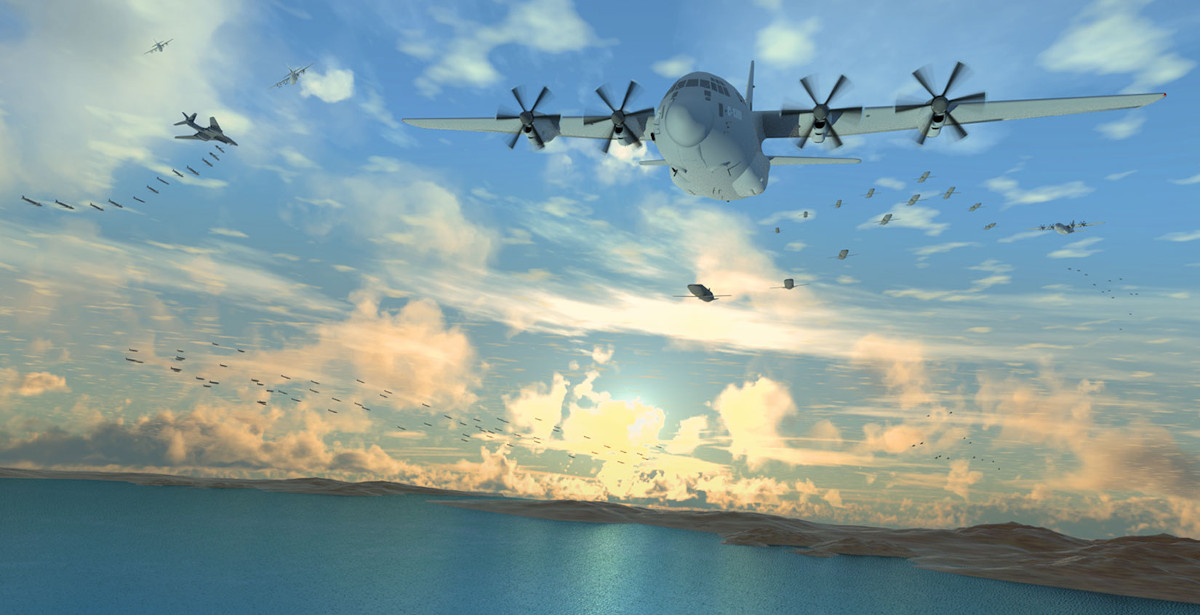
Fendley himself told Military.com that he saw Gremlins as one part of a three-tiered attritable unmanned aircraft family of systems for the U.S. military. “That will evolve this year. I think you’re going to see the Gremlins really be a high-focus item for the Defense Department moving forward because it’s kind of a third leg of that attritable capability set,” he explained.
The other two “legs” that he was referring to are Kratos’ UTAP-22, also known as the Mako, and its XQ-58A Valkyrie. Both types are presently being used to support various advanced technology efforts, particularly within the Air Force, including the development of “loyal wingman” types drones designed to work networked together with manned aircraft, and fully-autonomous unmanned combat air vehicles (UCAV). Artificial intelligence and machine learning are major components of many of these programs, especially the Air Force’s Skyborg initiative, which Kratos is involved in.
Skyborg is seeking to develop a suite of systems that will together form a “computer brain” to operate loyal wingman drones, as well as UCAVs, and an initial version of that package flew for the first time in May on board a UTAP-22. Separately, the Air Force also demonstrated the ability to launch a smaller drone from inside the XQ-58A’s internal payload bay in April.
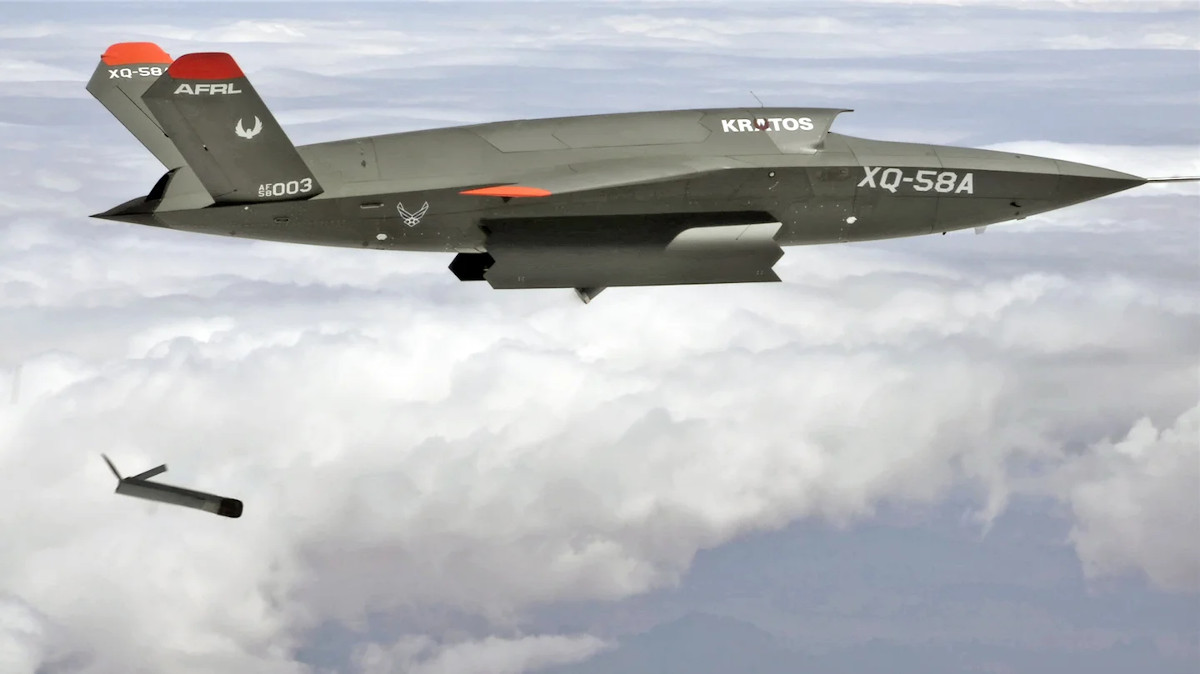
DARPA’s Gremlins program still has yet to demonstrate the ability of a mothership aircraft to recover an X-61A in flight. A C-130-type aircraft configured for this role failed to reel in any Gremlins drones during flight testing last year. The next round of Gremlins flight testing is presently scheduled to begin later this year.
If those flight tests are successful, it could just be a matter of time before DARPA looks to demonstrate the ability of a mothership send out swarms of Gremlins to deploy their own swarms, or launch other payloads, including small munitions, and then return to their aerial nest to be reloaded and rearmed for another mission.
Contact the author: joe@thedrive.com
